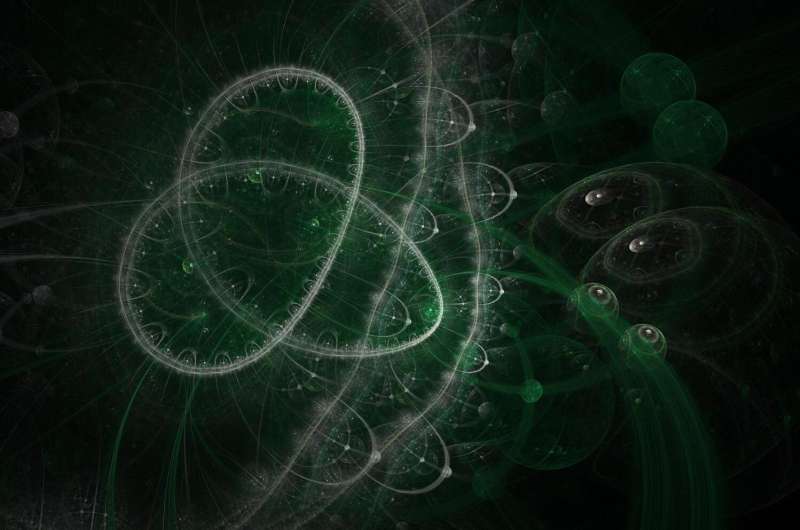Researchers refine method for detecting quantum entanglement

RMIT quantum computing researchers have developed and demonstrated a method capable of efficiently detecting high-dimensional entanglement.
Entanglement in quantum physics is the ability of two or more particles to be related to each other in ways which are beyond what is possible in classical physics.
Having information on a particle in an entangled ensemble reveals an "unnatural" amount of information on the other particles.
The researchers' paper, "High-dimensional entanglement certification", is being published on Friday 17 June in Scientific Reports.
Dr Alberto Peruzzo, a senior research fellow with RMIT University's School of Engineering and Director of RMIT's Quantum Photonics Laboratory, said: "The method we developed employs only two local measurements of complementary properties. This procedure can also certify whether the system is maximally entangled."
Full-scale quantum computing relies heavily on entanglement between the individual particles used to store information, the quantum bits, or qubits.
Quantum computing promises to exponentially speed up certain tasks because entanglement allows a vastly increased amount of information to be stored and processed with the same number of qubits.
Peruzzo said: "Together with this increase also comes the problem of needing to measure the device many times to find out what it is truly doing - that is, before the quantum computer is up and running, we need to gather an exponentially large amount of information on how it is performing."
Zixin Huang, a PhD student working on the experiment, said: "The current form of computer encodes information in binary form. A higher dimensional state, however, is a particle that contains a message that can be 0, 1, 2 or more, so much more information can be stored and transmitted.
"To date, tools for characterising high-dimensional entangled states are limited. In the future when quantum computers become available, our method can potentially serve as a tool in certifying whether the system has enough entanglement between the qubits.
"It significantly cuts down on the number of measurements needed - in fact, it needs the least number of measurements per dimension. Additionally, unlike some others, this method works for systems of any dimension."
More information: Scientific Reports, DOI: 10.1038/srep27637 , Preprint: arxiv.org/abs/1604.05824
Journal information: Scientific Reports
Provided by RMIT University




















